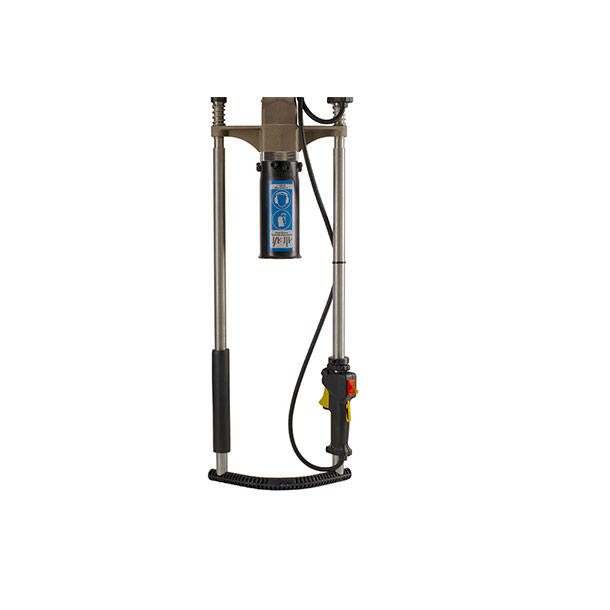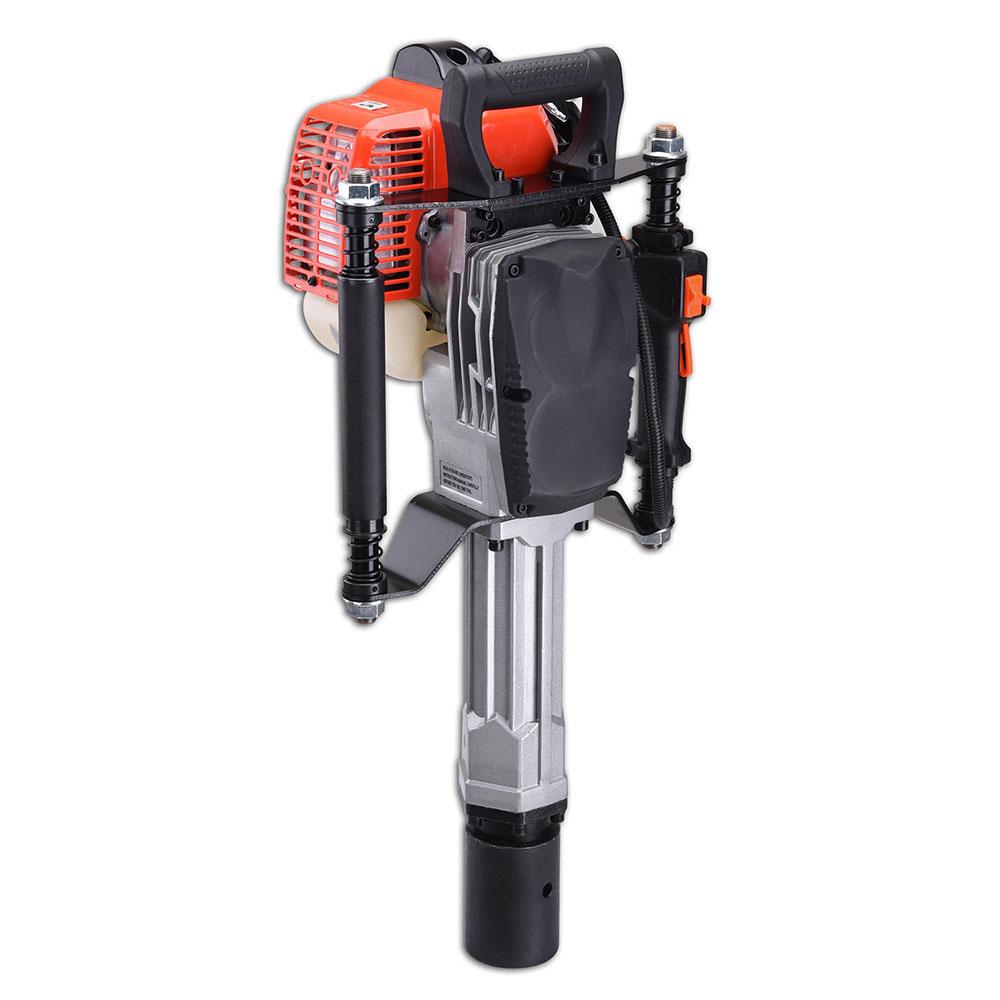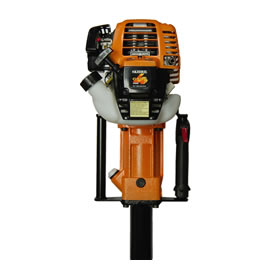

- #DIY GAS POWERED POST DRIVER INSTALL#
- #DIY GAS POWERED POST DRIVER DRIVERS#
- #DIY GAS POWERED POST DRIVER DRIVER#
- #DIY GAS POWERED POST DRIVER MANUAL#
#DIY GAS POWERED POST DRIVER INSTALL#
Install the hydraulic pressure supply hose to the tractor pressure supply port. Fix the three-point hitch link to removable pins in the post driver three-point hitch weldment and secure the pins with Lynch pin. Fix two lower three-point hitch arms to the post driver three-point hitch weldment hitch pins. Check whether the three-point hitch has lined up and stop the tractor. Position the post driver on a hard surface.
#DIY GAS POWERED POST DRIVER DRIVERS#
Gas-powered post drivers are particularly helpful for installing large posts (3-4 inches in diameter) or dozens of posts all at once.

Drill two 3/16-inch holes at any convenient location on the post driver and attach the storage tube to it using two pop rivets.Īttach the post driver to a tractor. You simply hoist the driver on top of the stake and push the trigger, prompting the driver to rapidly pound the post into place. Try pushing the main hydraulic control valve lever forward without pulling or squeezing the yellow-tipped control valve safety lever. Apply thread sealant to the hose fitting threads and install side tilt cylinder hoses between the triple lever control valve and the tilt cylinder hose. Apply thread sealant to the threads and install a swivel fitting on the pressure hose to the control valve.

Apply thread sealant to the threads and affix the valve drive ram hose between the hydraulic control valve and the drive cylinder assembly. Attach the main hydraulic hoses to the hydraulic control valve. Apply thread sealant to the threads and affix hydraulic fittings. Remove the plugs from the hydraulic control valve. Fix the hydraulic valve on the short channel bracket and secure it tightly with a three-inch valve mounting bolts, washers and nuts.Īssemble the hydraulic control valve. Its torque rates 1.45 Nm at 5000 RPM, and power rates at. This T-post driver has exceptional balance to the vertical shaft angle of the 2 stroke engine. It is gasoline powered with a fuel capacity of 1/4 gallon, and a fuel ratio of 50:1. Set the base plate to the center of the three-point hitch and tighten the hardware. This fence post driver is an ideal device to use on star posts, pipes and stakes.
#DIY GAS POWERED POST DRIVER MANUAL#
Fix the mounting hardware you have just removed from the manual base plate. Attach the manual base plate onto the three-point hitch weldment. Remove the mounting hardware from the manual base plate. Turn over the three-point hitch weldment and set to the stabilizer leg base plates. Fix stabilizer legs to the leg brackets and fasten them with leg lock bolts. Fix stabilizer leg brackets over the cross tube and secure them with leg bracket bolts. Position the three-point hitch weldment in an upside-down position on the floor. Secure them firmly using a road block pin. Remove the road block pin from the lower hole in thew drive ram and fix it to the upper hole in drive ram. Position the short channel to the main carriage and secure it tightly using bolts, washers and nuts.

Position the main carriage channel in an upright position using an overhead lifting device.


 0 kommentar(er)
0 kommentar(er)
